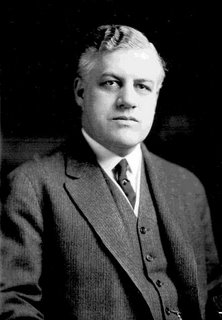 It is increasingly clear to those of us who study cybercrime that conventional law enforcement, alone, simply cannot handle the problem, for several reasons.
It is increasingly clear to those of us who study cybercrime that conventional law enforcement, alone, simply cannot handle the problem, for several reasons. As I have said elsewhere, cybercrime challenges even the best law enforcement agencies because it demands resources they do not have (and we cannot supply), because it is so easy to be anonymous online, because it is committed on an expansive scale and because it is so often transnational in character.
This means we need to develop a modified approach, one that improves our ability to deter and therefore control cybercrime.
One solution is to involve the private sector in the battle against cybercrime.
The FBI and the U.S. Secret Service are doing this with their Infragard and Electronic Crime Task Force programs, both of which bring federal and state law enforcement officers together with individuals and entities from the private sector. The general purpose is to facilitate information-sharing about attacks and threats; a subsidiary function, at least in some instances, is to enhance the resources available to law enforcement.
That’s a good solution, I think. Another ad hoc approach is evolving – online vigilantism, which takes various forms: Artists Against 419 and Perverted Justice are two examples. I’m essentially agnostic about the Artists Against 419; I know that some of the things they do violate the law, but I just can’t manage to be indignant about the harassment of 419 scammers.
I am, though, distinctly not a fan of Perverted Justice, not on its own terms and especially not when they team up with MSNBC to broadcast their depressing stings. I know the people they catch are scum, but I still don’t like how they do it; I particularly don’t like the broadcast stings in which (and I have only seen a little bit of these) the MSNBC guy seems to take delight in demonstrating precisely how stupid these guys are. I also don't like the fact that the Perverted Justice people are sometimes deputized, and that they are paid for their efforts by MSNBC. I heard a police officer refer to this arrangement as "law enforcement for profit."
Enough venting. My goal here is not to go off on a tangent about Perverted Justice. I actually have a larger point I want to make.
I just finished a novel the events of which take take place ninety-some years ago, during the Spanish Influenza pandemic. In reading the novel, I learned about an organization I had never heard of: the American Protective League.
The American Protective League was “a voluntary association of patriotic citizens acting through local branches which were established in cities and counties throughout the country”. It was created in March of 1917, two weeks before the U.S. entered World War I. It was created as an auxiliary to the Bureau of Investigation of the Department of Justice (the precursor to the FBI), though military intelligence also seems to have been involved in its creation. Members carried a badge and membership card which showed they “were connected with the Department of Justice.” They were, in essence, federal deputies.
The APL had “twelve hundred units functioning across America, all staffed by business and professional people. It was a genuine secret society . . . . Membership gave every operative the authority to be a national policeman.” APL members investigated (and apparently coerced) “seditious and disloyal” citizens, checked on who had bought Liberty Bonds, rounded up “draft evaders,” broke strikes and generally seem to have harassed anyone they regarded as German sympathizers or “Reds.” They seem to have routinely violated civil rights and, as one source notes, they “burgled, vandalized, and harassed I.W.W. members and their offices.” And as that source notes, the Wilson administration supported the APL even though many of their activities were illegal.
In describing the APL’s activities to Congress, the Attorney General said, “[i[t is safe to say never in history has this country been so thoroughly policed.”
The APL has been a revelation to me. I have done some thinking and writing about how we could bring representative of the private sector into the battle against cybercrime. I have talked to others about this, and have heard the argument that corporate entities or at least certain of their employees should be deputized to give these private citizens more authority to investigate cybercrime and even to pursue cybercriminals. In a short piece I speculated a bit about how this would work in practice, wondering if it would be possible to actually deputize private citizens on a continuing basis and encourage them to “go after” cybercriminals.
Historically, vigilantes – like the Wild West vigilantes we in the U.S. always think of when we hear the term – have emerged when law enforcement was lacking or was perceived as ineffective. Vigilantes have, therefore, been a substitute for law enforcement, instead of an adjunct to law enforcement . . . or so I thought until I heard about the APL.
The APL saga makes me really concerned about the idea of formally bringing private sector personnel into law enforcement, either as adjuncts or as APL-style “deputies.” I know we’re a lot more sensitive to civil rights now than people were ninety-some years ago, and I might agree that the investigation (and even apprehension) of cybercriminals is not likely to create opportunities for the kinds of abuses the APL members inflicted early in the last century.
I think, though, I’m really hesitant about blurring boundaries – about formally bringing laypeople into the battle against cybercrime (or any other kind of crime, for that matter).
I still think we need to figure out an approach that allows us to utilize private-sector resources (personnel, equipment, money) to improve law enforcement’s ability to deal with cybercrime. I just think we need to be very, very careful how we do this.
(Oh, the photo is A. Mitchell Palmer, Attorney General during much of the time the American Protective League was operating.)





